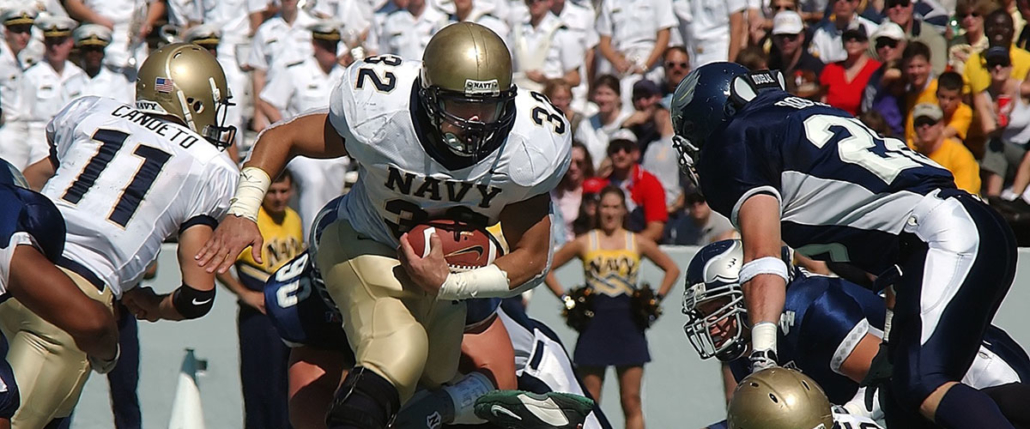CFB DFS Beginner’s Guide
College Football vs. NFL
There are a lot of similarities to beginning strategies in CFB and professional football.
But both sports have some vast differences when drawing up strategies.
I am here to help you with the differences so that you will be successful on Saturdays, or Thursdays, or Fridays, or Mondays, maybe even Tuesdays…yea, college football is played on a lot of different days.
Find your resources
You really need to get familiar with teams in college football, and that can be very difficult because in college, there are 128 FBS Division I teams. Yes, 128!
Not all slates will have every single game. Instead various sites will pick the games they wish to feature. But many of the sites will have more than 20 games on a single slate, early and late. It can make it very difficult to sift through the players. Plus, there just isn’t a lot of player news available for every single player.
This is why you need your own resources for player news. I suggest subscribing to teams’ athletic departments on Twitter, find college beat writes, both student newspapers and local newspapers in that college’s town.
DailyOverlay provides an article with our selections as well as a look at the Consensus selections article each week from industry leaders around the league.
Fading Games
Like the NFL, Vegas is a very useful tool in guiding player selection in CFB.
I must emphasize using this to help you fade potential low-scoring games in a slate.
It’s helpful to just fade the games that aren’t projected to score points because we don’t want to target those games. Really, it’s very likely the projections will hold true because it’s college football, it has less parity than NFL, and it’s easier to project the flow of the game.
Lack of Parity
College football is unique in that you do get the occasional upset of a few of the top teams each season, however, if a team is solid, it is likely to win 10, 11 or even 12 regular season games. College football lacks the parity of the NFL, so it’s safer to pick players from a high-scoring offense because those players are most likely going to do well against a sub-par team.
For example, if No. 1 Ohio State, which is returning a lot of its core players from last season’s title run, is facing unranked Tulane University. It’s a very good bet that a player like RB Ezekiel Elliott is going to put up good numbers. Why? Because Ohio State is just that much better than Tulane and in 99 out of 100 games played between the two, OSU is going to dominate, Ezekial Elliott is the starting RB and he gets the lions share of the touches. Thus, despite the blowout potential, Elliott has a great chance of being productive, especially if Vegas likes the Buckeyes in a blowout.
Opportunities
Like the NFL, CFB is all about opportunities. Who is getting the most carries? Who is seeing the most touches? Georgie’s starting RB is out due to injury, who is his backup? Stud receiver averages 10 catches per game? Yep, he’s worthy of a roster spot. The wolves get theirs in college football, so feed the hungry.
Dual-Threat QBs and RBs
Quarterbacks in college football are the most important position to target. Why? Because most sites make you select two of them. Unlike NFL DFS, college football quarterbacks can make up a high percentage of your total points.
In college football, the dual-threat quarterback is your best friend. Not only will they help you score points through the air, but a bulk of their points will come from chewing up yardage on the ground and scoring rushing touchdowns (worth 6 instead of 4 like passing TDs).
Next, you want to target running backs. They are 1B to QBs in CFB DFS because they get the most touches and opportunities.
But what RBs do you want to choose? Well, that’s kind of easy. You want to target the backs that are the feature part of the offense. RBs on teams with QBs who are game managers are the better RB options. If the offense runs through the RB, that’s the guy you want.
What about wide receivers?
They are an important source of points, especially the top guys. PPR is a big factor in college football, but you can always find value at receiver in CFB because there are just a lot of guys who play WR. If you have 20 games to choose from — that’s 40 teams with roughly 80-160 receivers to target depending on the offense. Sometimes the top guys are priced really high, and while they may go off, it’s an awful lot to spend on a guy who may get 10 catches in a game, if you are lucky enough.

